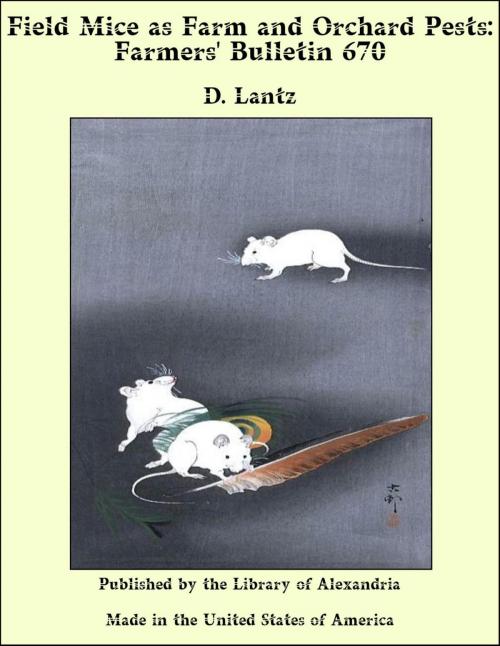Field Mice as Farm and Orchard Pests: Farmers' Bulletin 670
Nonfiction, Religion & Spirituality, New Age, History, Fiction & Literature| Author: | D. Lantz | ISBN: | 9781465581648 |
| Publisher: | Library of Alexandria | Publication: | March 8, 2015 |
| Imprint: | Language: | English |
| Author: | D. Lantz |
| ISBN: | 9781465581648 |
| Publisher: | Library of Alexandria |
| Publication: | March 8, 2015 |
| Imprint: | |
| Language: | English |
The ravages of short-tailed field mice in many parts of the United States result in serious losses to farmers, orchardists, and those concerned with the conservation of our forests, and the problem of controlling the animals is one of considerable importance. Short-tailed field mice are commonly known as meadow mice, pine mice, and voles; locally as bear mice, buck-tailed mice, or black mice. The term includes a large number of closely related species widely distributed in the Northern Hemisphere. Over 50 species and races occur within the United States and nearly 40 other forms have been described from North America. Old World forms are fully as numerous. For the purposes of this paper no attempt at classification is required, but two general groups will be considered under the names meadow mice and pine mice. These two groups have well-marked differences in habits, and both are serious pests wherever they inhabit regions of cultivated crops. Under the term "meadow mice"[1] are included the many species of voles that live chiefly in surface runways and build both subterranean and surface nests. Under the term "pine mice"[2] are included a few forms that, like moles, live almost wholly in underground burrows. Pine mice may readily be distinguished from meadow mice by their shorter and smoother fur, their red-brown color, and their molelike habits.
The ravages of short-tailed field mice in many parts of the United States result in serious losses to farmers, orchardists, and those concerned with the conservation of our forests, and the problem of controlling the animals is one of considerable importance. Short-tailed field mice are commonly known as meadow mice, pine mice, and voles; locally as bear mice, buck-tailed mice, or black mice. The term includes a large number of closely related species widely distributed in the Northern Hemisphere. Over 50 species and races occur within the United States and nearly 40 other forms have been described from North America. Old World forms are fully as numerous. For the purposes of this paper no attempt at classification is required, but two general groups will be considered under the names meadow mice and pine mice. These two groups have well-marked differences in habits, and both are serious pests wherever they inhabit regions of cultivated crops. Under the term "meadow mice"[1] are included the many species of voles that live chiefly in surface runways and build both subterranean and surface nests. Under the term "pine mice"[2] are included a few forms that, like moles, live almost wholly in underground burrows. Pine mice may readily be distinguished from meadow mice by their shorter and smoother fur, their red-brown color, and their molelike habits.















